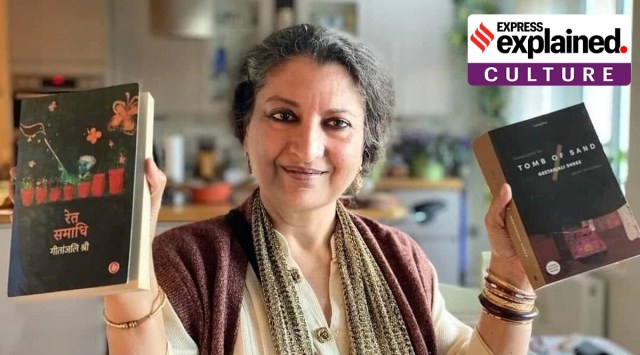Tomb of Sand has now joined the wide array of women’s voices in Partition literature that chronicles the great migration and its human cost.

What is Partition literature?
The Partition, which in 1947 resulted in the creation of India and Pakistan (Pakistan would later be partitioned in 1971 with East Pakistan becoming Bangladesh), remains one of the most traumatic events in the subcontinent’s history. Millions were displaced and, according to some estimates, more than a million lost their lives.
Partition literature refers to writings that chronicle and explore the event, from all sides of the borders. It includes non-fiction as well as fictional narratives. Today, Partition literature is studied in some universities of India either through a specific paper, or through related texts in other papers.
Why is Partition literature relevant?
The repercussions of Partition of August 1947 are felt to this day. It uprooted millions and impacted life and demography in different regions from Punjab, Bengal, Sindh to Tripua and Delhi, among others. Different communities were impacted in different ways, based on their social and economic positions in the society, their caste, gender and religion. It is not possible for just the official accounts of Partition to contain this vast range of experiences.
In their essay ‘Speaking for Themselves: Partition History, Women’s History’, Ritu Menon and Kamla Bhasin said: “Official memory, after all, is only one of many memories”.
Partition literature plays its role in bringing forth the many truths that were involved, particularly from marginalised perspectives.
Story continues below this ad
According to Dr Devjani Ray, Associate Professor at Miranda House, University of Delhi, reading Partition literature helps us “rethink our positions” and offers a chance to engage more deeply with our past.
Why are women’s voices in Partition literature important?
Partition literature was by and large dominated by male writers until the 1990s. Prior to that, even fiction that spoke about women’s experiences often happened through the male gaze like Saadat Hasan Manto’s short story “Khol Do” (“Open It”) and Narendranath Mitra’s novel Jaiba (The Biological).
This is not to say that women had not written about the event till then. Novels like Jyotirmoyee Devi’s Epar Ganga Opar Ganga (1968), which was translated as The River Churning, dealt with the female experience of the Partition, which involved sexual violence, forced conversions, and in many cases, getting shunned by their own communities.
In fact, one of the most enduring literary pieces about the Partition is Amrita Pritam’s Punjabi poem “Aaj Aakhaan Waris Shah Nu (Today I Invoke Waris Shah)”.
Story continues below this ad
From the 1990s, women’s voices increased in Partition writing. Urvashi Butalia was instrumental in archiving oral histories of women who lived through the event. She also documented how it affected children and the scheduled castes.
Bapsi Sidhwa’s novel Ice Candy Man (1992) offered a glimpse into post-Partition Pakistan and its anxieties and faultlines through a child’s eyes.
Since then, we have had authors like Sunanda Sikdar, whose post-Partition memoir Doyamoyeer Kotha (translated into English as A Life Long Ago) was acclaimed widely.
Another example is Pakistani historian Anam Zakaria, who has written two books about partitions in the Indian subcontinent: The Footprints of Partition: Narratives of Four Generations of Pakistanis and Indians (2015) and 1971: A People’s History from Bangladesh, Pakistan and India (2019).
Story continues below this ad
According to Ray, due to an increase in translations in recent years, women who had mostly written in their mother tongues were discovered by the English-reading public.
Pakistani author Khadija Mastoor’s Urdu novel Aangan, which is considered a landmark work in Partition literature, was first translated as The Inner Courtyard by Neelam Hussain in 2001, and later as The Women’s Courtyard by Daisy Rockwell in 2018.
This year, Daisy Rockwell shared the International Booker Prize with Geetanjali Shree for Tomb of Sand.
Rockwell also translated Hindi author Krishna Sobti’s Gujarat Pakistan Se Gujarat Hindustan into English as A Gujarat Here, A Gujarat There in 2019, which offers an insight into the events leading up to the Partition through a feminist lens.
Story continues below this ad
Indian Urdu-language author Qurratulain Hyder’s novels have also become a part of contemporary culture because of their English translations.
Aag Ka Darya and Aakhir-e-shab Ke Hamsafar, which were translated into River of Fire and Fireflies in the Mist, respectively, by Hyder herself, explore the history of the subcontinent and how it came to be divided in the way that it was.








































